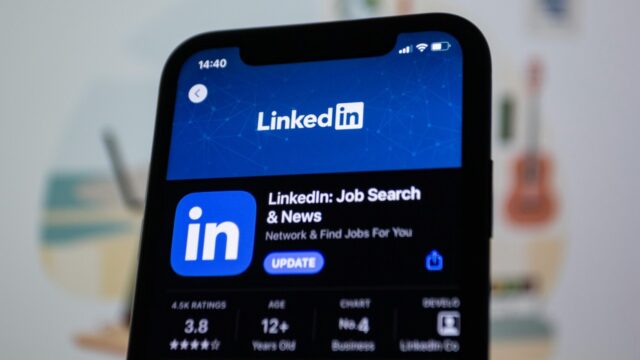LinkedIn has become one of the most effective platforms for B2B marketing, providing businesses with unique opportunities to connect with decision-makers, generate leads, and promote their products or services. With its robust advertising features, LinkedIn Ads can help you reach a targeted professional audience. Here’s how to effectively use LinkedIn Ads for B2B marketing.

Table of Contents
Toggle1. Define Your Objectives
Before launching any ad campaign, it’s crucial to clarify your objectives. Common B2B marketing goals on LinkedIn include:
- Brand awareness: Increase visibility among professionals in your industry.
- Lead generation: Capture potential customer information for follow-up.
- Website traffic: Drive users to your company’s website or landing pages.
- Event promotion: Raise awareness for webinars, conferences, or other events.
- Product awareness: Showcase new products or services to a targeted audience.
Clearly defined objectives will guide your ad strategy and help measure success.
2. Identify Your Target Audience
LinkedIn offers powerful targeting options to ensure your ads reach the right audience. You can target users based on:
- Location: Focus on specific countries, regions, or cities.
- Industry: Select industries relevant to your products or services.
- Company size: Choose companies based on employee count.
- Job title and function: Target specific roles or functions that are relevant to your offerings.
- Skills: Reach users with specific skills that align with your products or services.
By refining your target audience, you can improve your ad’s relevance and effectiveness.
3. Choose the Right Ad Format
LinkedIn offers several ad formats to suit different marketing goals. Consider the following options:
- Sponsored Content: Native ads that appear in the LinkedIn feed, ideal for brand awareness and engagement. You can share articles, videos, or images.
- Text Ads: Simple ads that appear on the right side of the LinkedIn homepage. These are cost-effective for driving traffic to your website or landing pages.
- Sponsored InMail: Personalized messages sent directly to LinkedIn users’ inboxes, ideal for direct outreach and lead generation.
- Video Ads: Short video clips that can effectively convey your message and capture attention.
- Carousel Ads: Multiple images or videos that users can swipe through, ideal for showcasing multiple products or features.
Select the ad format that aligns with your campaign objectives and resonates with your target audience.
4. Craft Compelling Ad Copy and Visuals
Your ad content should be clear, engaging, and relevant to your audience. Here are some tips for crafting effective ads:
- Clear headlines: Use attention-grabbing headlines that convey the core message.
- Concise copy: Keep your ad copy concise and focused. Highlight the key benefits of your offering.
- Strong call-to-action (CTA): Encourage users to take action, such as “Learn More,” “Download,” or “Sign Up.”
- High-quality visuals: Use professional images or videos that reflect your brand and resonate with your audience.
5. Set a Budget and Bid Strategy
LinkedIn Ads operate on a bidding system. You can choose between:
- Cost per click (CPC): Pay when someone clicks on your ad.
- Cost per impression (CPM): Pay for every 1,000 impressions your ad receives.
- Cost per send (CPS): Pay for each InMail message sent.
Set a budget based on your overall marketing strategy, and consider starting with a small budget to test the waters before scaling up.
6. Monitor and Optimize Campaign Performance
Once your ads are live, regularly monitor their performance through LinkedIn Campaign Manager. Key metrics to track include:
- Click-through rate (CTR): Indicates how well your ad is resonating with your audience.
- Conversion rate: Measures how many users took the desired action after clicking your ad.
- Cost per conversion: Helps you understand the effectiveness of your ad spend.
- Engagement metrics: Analyze likes, shares, and comments to gauge audience interaction.
Use this data to make informed decisions about optimizing your campaigns. Adjust targeting, ad copy, visuals, or budget based on performance insights.
7. Leverage A/B Testing
A/B testing involves running multiple versions of your ads to see which performs better. Experiment with different headlines, images, ad formats, and targeting options. This iterative approach allows you to identify the most effective elements of your campaigns and refine your strategy accordingly.
8. Retarget Your Audience
Retargeting allows you to reach users who have previously interacted with your brand but didn’t convert. Use LinkedIn’s retargeting options to show ads to users who visited your website, engaged with your content, or completed specific actions. Retargeting can help reinforce your message and increase conversion rates.
9. Engage with Your Audience
Engagement doesn’t stop with the ad click. Monitor comments and messages related to your ads, and respond promptly to inquiries or feedback. Engaging with your audience fosters relationships and enhances brand credibility.
10. Evaluate and Adjust Your Strategy
At the end of your campaign, analyze the results to understand what worked and what didn’t. Assess your objectives against actual performance and gather insights for future campaigns. Continuous evaluation and adjustment are key to improving your B2B marketing strategy on LinkedIn.
Conclusion
LinkedIn Ads provide B2B marketers with a powerful platform to connect with decision-makers, generate leads, and enhance brand visibility. By defining clear objectives, targeting the right audience, and crafting compelling content, you can leverage LinkedIn’s advertising capabilities to drive meaningful results for your business. Regular monitoring, optimization, and engagement will help you maximize the effectiveness of your campaigns and achieve your marketing goals.


No responses yet